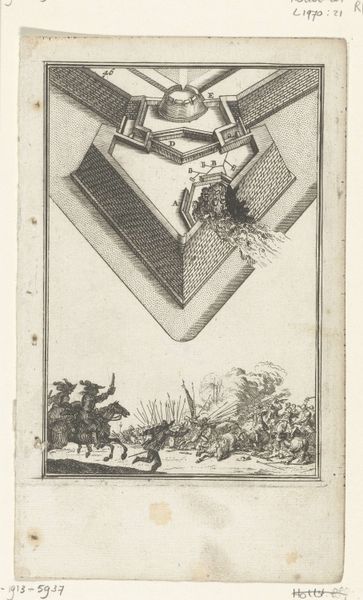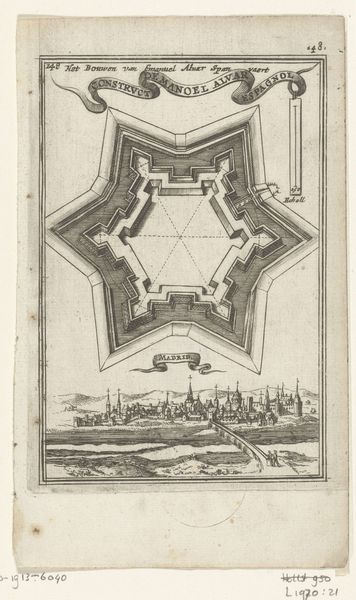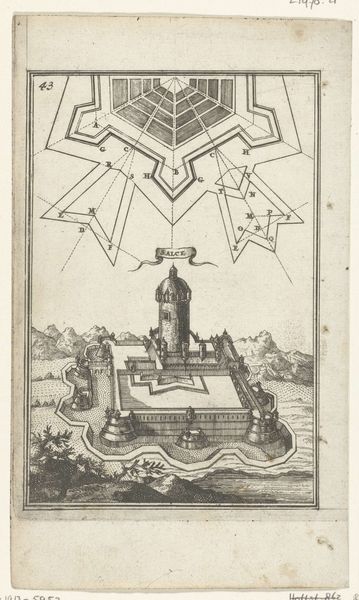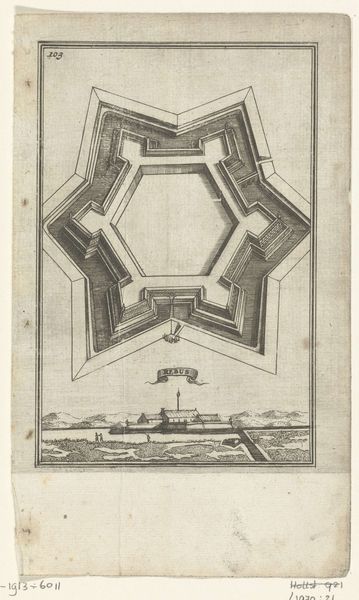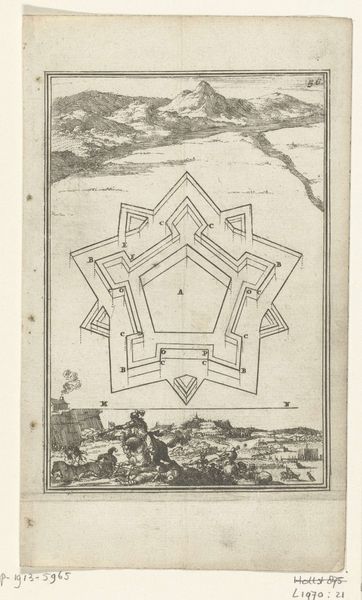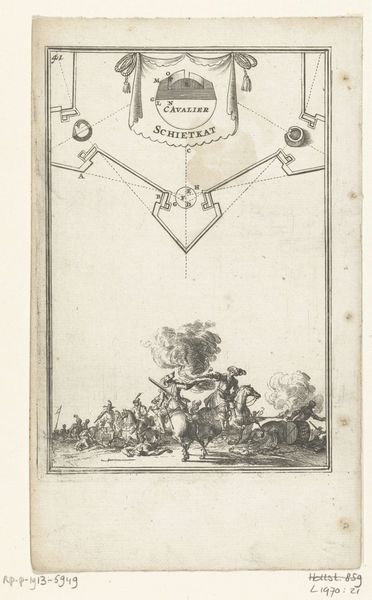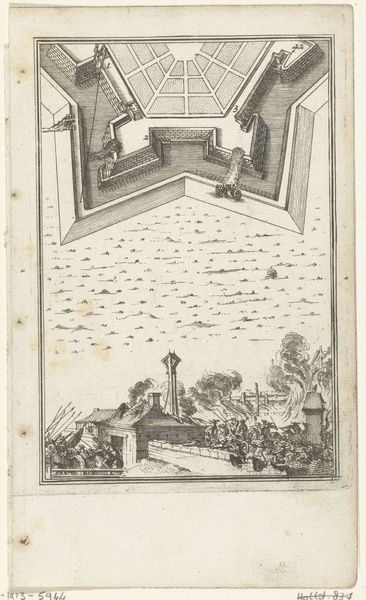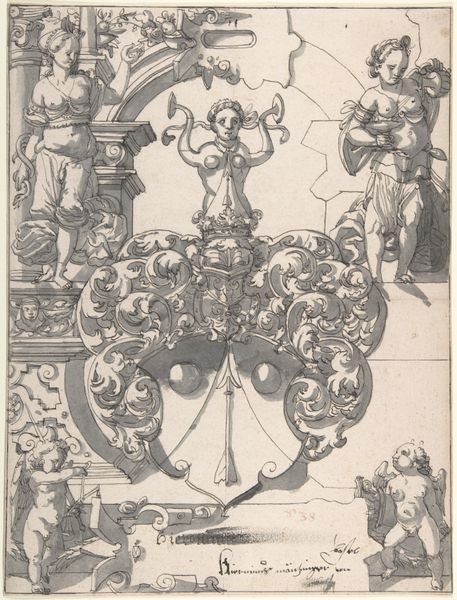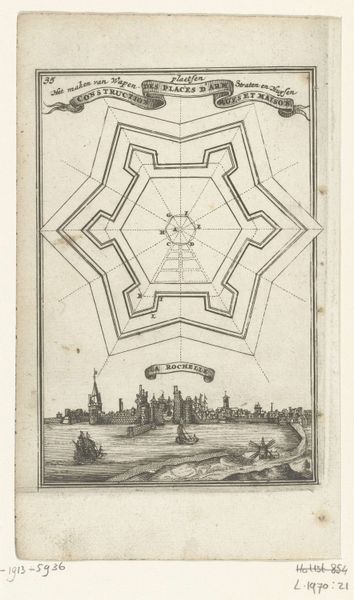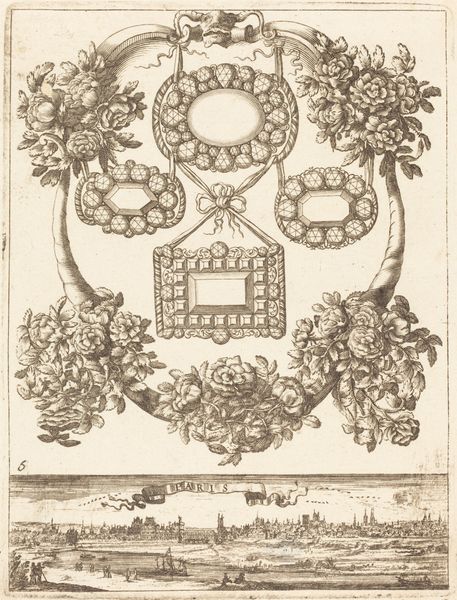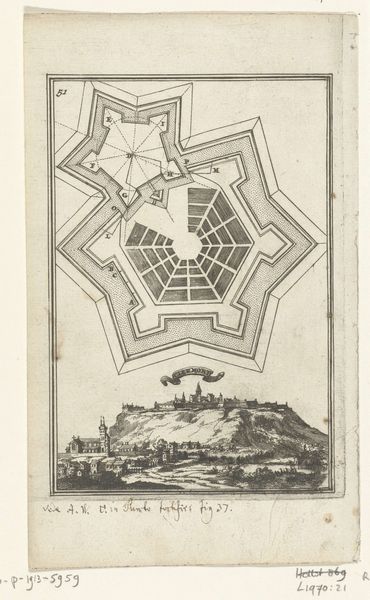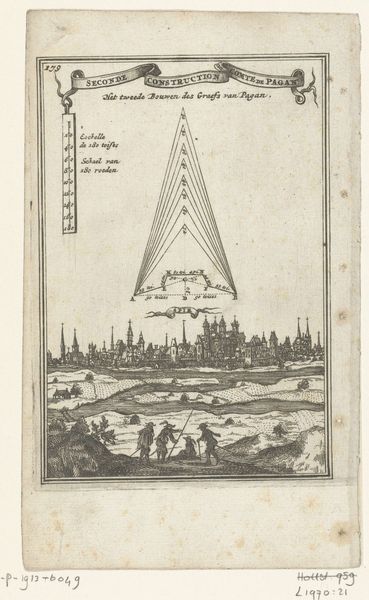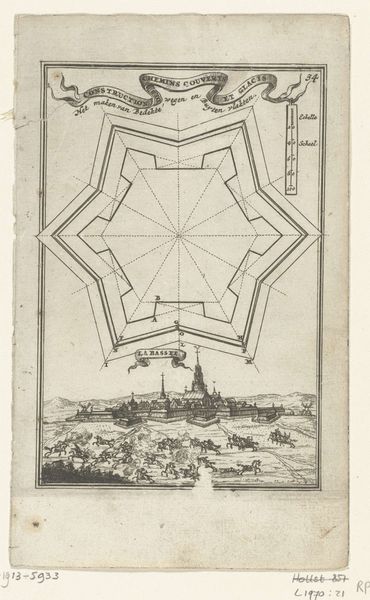
Illustratie voor 'Den Arbeid van Mars' van Allain Manesson Mallet 1672
0:00
0:00
print, engraving
#
baroque
# print
#
line
#
cityscape
#
history-painting
#
engraving
Dimensions: height 185 mm, width 111 mm
Copyright: Rijks Museum: Open Domain
Curator: Looking at this densely detailed print, I see how warfare becomes intricately mapped through landscape and urban planning. Editor: It’s a dizzying contrast—the neat geometric plan hovering above the chaotic swirl of the battle scene below. A sort of top-down versus bottom-up perspective. Curator: Precisely. This is Romeyn de Hooghe’s ‘Illustratie voor 'Den Arbeid van Mars' van Allain Manesson Mallet,’ created in 1672. Note the calculated structure of the fortress represented above the soldiers on the ground. Consider it within the broader historical context—Europe in a near constant state of war. It brings up the questions of power and how we rationalize or legitimize acts of violence. Editor: Right, the "legitimacy" of war coming down to engineering? It feels unsettling seeing that orderly form floating above the brutal melee. It's all rendered with such fine lines too, it looks delicate almost. Curator: The use of engraving enhances this perceived precision. It's meant to suggest order, efficiency, and ultimately, control over physical space and people. The clean lines also feel almost bloodless— sanitized? Editor: It's not bloodless to the soldiers! It certainly highlights the social layers at play here. The officers ordering troops from their tented headquarters in mobile "offices". While the lines are all about craft—there's clearly the skilled labor that’s gone into this. Someone meticulously etched this entire scene for hours, or possibly days. Curator: The print medium itself is key. Its reproducibility suggests an aim for widespread dissemination of information but also a sort of glorification. The labor of soldiers becomes this consumable image and idealizing warfare to gain further support, the print serving as propaganda. It would've circulated widely. Editor: A means to manufacture consent through imagery. You’ve certainly highlighted how it makes you examine the means and the message combined. I keep thinking about what gets lost when war becomes something cleanly rendered, planned, consumed, and replicated like this print. Curator: Right? It's this intersection between abstract planning and its very real, violent implications that continues to haunt me. Editor: It really shows how looking closer at the tools, medium, and circumstances allows us to see art, society, and, well, war, more clearly.
Comments
No comments
Be the first to comment and join the conversation on the ultimate creative platform.
